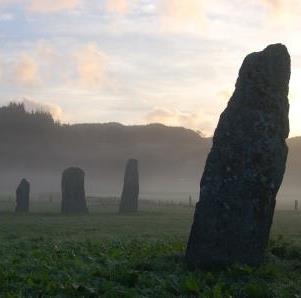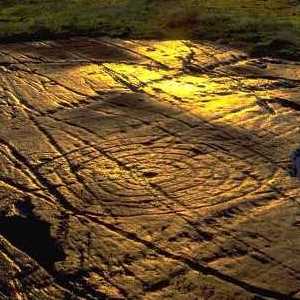Ancient mysteries of Scotland's Kilmartin Glen
The village of Kilmartin (Scottish Gaelic: Cille Mhàrtainn) is in Argyll and Bute (Earra-Ghàidheal agus Bòd) in the west of Scotland. It is located in Kilmartin Glen, an area noted for having the most important concentration of Neolithic and Bronze Age remains in mainland Scotland. Kilmartin Glen can quite rightly claim to be one of the world’s most significant archaeological landscapes. Standing stones, stone circles, remarkable carved rock art, cairns, castles and forts, all spanning a period of over 5,000 years.
The purpose and significance of these ancient monuments remain a mystery. Around the Celtic world there are many stone monuments and carvings in rock made by people from prehistoric times. As Celts we are the direct descendants of those that constructed these monuments in the Celtic lands of Europe's Atlantic coast. Ancient stones and tombs placed in a way that look to the stars and capture moments of astronomical importance. It is recognised that many stone monuments are aligned to the rising and setting of the sun and moon during the summer and winter equinoxes. The prehistoric rock art, as found in Kilmartin Glen, is even more of a mystery.
Prehistoric rock art is more commonly known as cup and ring markings. They comprise of cup-shaped depressions, often with radiating groves and one or more concentric rings, which are compiled into different, and often elaborate, designs. These motifs are carved onto natural rock surfaces in the open air and remain one of the most mysterious and enigmatic aspects of the belief systems held by our ancestors. There are about 2,400 prehistoric carved rocks known in various parts of Scotland and it is likely many more have yet to be discovered and recorded. They date back over 5,000 years, and were created by the people that lived in the Neolithic and Early Bronze Age. They are not confined to Scotland. They are found mainly in areas of Atlantic Europe, with examples across the Celtic lands stretching from the north of Scotland to Galicia.
For more information on the wonders of Kilmartin Glen see the websites of Kilmartin Museum and Historic Environment Scotland (HES) (Scottish Gaelic: Àrainneachd Eachdraidheil Alba). Kilmartin Museum is in the village of Kilmartin and well worth visiting - check their website for opening times.
Images below from Kilmartin Museum.







